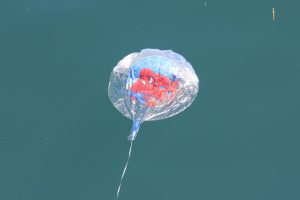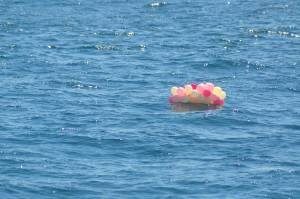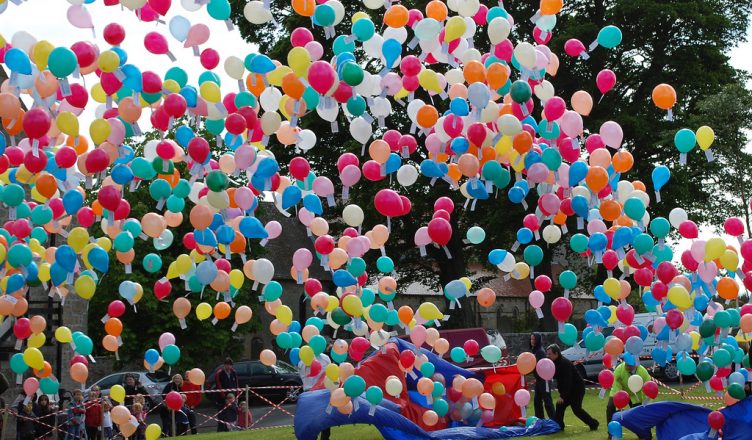Today’s #TipTuesday was inspired by The Gloucester Clean City Commission who gathered data and were able to keep a local event from releasing hundreds of balloons at a celebration!
Balloon releases have become popular as a way to celebrating, remembering, or bringing attention to an event or cause over the last 30 years. However, more recently environmental organizations around the world have studied the dangers of balloon releases to the environment, both terrestrial and marine, and found that they are extremely damaging.
Balloon releases are direct littering which has been proven to injure and kill marine animals, many of which are endangered species. In the Gulf of Maine specifically, we see several species of whales, seabirds, seals and turtles who could easily ingest or become entangled in balloons and the strings. These animals struggle to differentiate between a harmful balloon and actual food. Whales, for example, can swallow a balloon while skimming for food at the surface.
Not only do these balloons have the potential to kill marine animals, they also will negatively impact our own health. Balloons and their strings are made of plastic. If the balloon is not consumed by something, it will eventually break down into smaller and smaller pieces. These tiny bits of plastic are then consumed by plankton, filter feeders (mussels, clams, oysters), crabs, lobsters, fish etc. That plastic

leaches chemicals into the tissues of these animals, many of which we eat. As a region where many people depend on the fishing industry, we cannot contribute to the decline of seafood consumption by releasing balloons which will eventually end up in our stomachs.
We certainly wouldn’t think about dumping a bunch of plastic bottles in the harbor, and balloon releases are no different than that. At Blue Ocean Society our staff is aboard 350-400 whale watching trips annually, departing from Gloucester, MA and Rye, NH. Part of our research is to document any marine debris seen during these trips. In 2015 alone, we documented over 700 balloons. At our beach cleanups all along ME, NH and MA in 2016, we picked up over 400 balloons, a few still completely inflated. In some states and cities, including Nantucket and Provincetown in Massachusetts, it is actually illegal to release balloons and offenders can be fined.
Some people will argue that the latex balloons released are biodegradable and will pop into such small pieces they won’t harm any marine life. Unfortunately, many balloons will float back down to Earth before they reach enough height to pop. Natural latex might be biodegradable, but once different chemicals and colorful dyes are added to the balloons they lose that degrading property. Check out this backyard test on how a pair of latex balloons degraded or didn’t.

There are many other ways to celebrate an event, such as biodegradable confetti, reusable ribbons or banners, hand-made tissue pom-poms, or reusable pinwheels. Often we release balloons as a gift to those who have passed as a way to send them something. Other ways to remember loved ones are: planting a tree or flowers in their honor, releasing native flower petals in the ocean, or gathering together and blowing large bubbles.







Great ideas for other ways to celebrate special events.
Russell
Together we can make the difference we want to see, great work on this and the many things the Commission is doing to make our city and world safer and healthier. Thanks to all who worked hard to make this happen.
Thank you for your research and collaboration. We here in Gloucester have been positively impacted your work and are no longer releasing balloons as a community.
Zach,
Thanks for your comment! Glad to hear Gloucester is no longer releasing balloons. Hopefully you will inspire other communities!
I agree with Zach, thank you so much! We appreciate your leadership in this work! Please keep it up and we can do great things 🙂